
Electric vs. Induction Cooktops: How To Choose
Choosing the right cooktop can make all of the difference in the way you get meals from the fridge to the table. Use this guide to discover how electric and induction cooktops work, the pros and cons of each, and the key differences to help you find the right cooktop for your cooking style, budget and everyday needs.
INDUCTION COOKTOPS
Induction cooktops are technically a type of electric cooktop, but they heat in a completely different way. Traditional electric models heat from the cooktop surface up, but induction cooktops heat the cookware directly using electromagnetic energy.
These models often use less energy and offer a highly responsive cooking experience when used with compatible cookware.
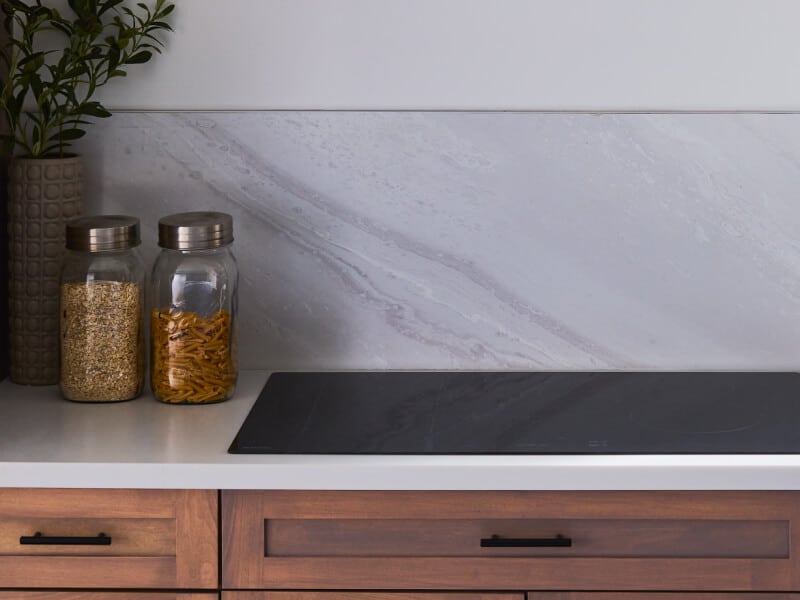
HOW DO INDUCTION COOKTOPS WORK?
Induction cooktops use electromagnetic energy to heat your cookware directly, rather than using the cooktop surface itself. This turns compatible pots and pans into their own source of heat, allowing for faster cooking and more precise temperature control.
These cooktops require ferromagnetic cookware—pots and pans made from or containing magnetic materials—which can include options like enameled steel, cast iron or certain types of stainless steel. The cooktop won’t detect cookware without magnetic properties and ultimately won’t heat incompatible cookware.
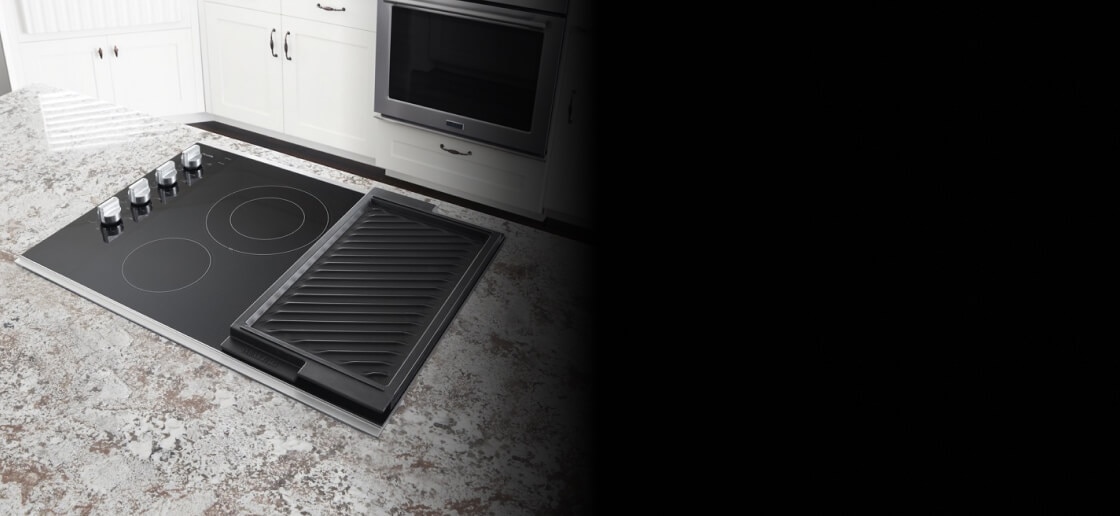
Maytag® cooktops
One cook space, full-meal power
Whether you’re working with a small space or just want more room for cooking, Maytag® cooktops offer power, durability and performance for every meal
INDUCTION COOKTOP PROS
Induction cooktops can transform your cooking experience, offering impressive speed, precision and control that can help everyday meal prep feel effortless. Explore the key benefits below to see how induction can change the way you cook in your kitchen.
Less heat loss: Induction cooking heats the cookware directly, instead of heating the cooktop surface first and then transferring that heat to the pan. This direct heating method typically wastes less energy than traditional gas or electric cooktops.
Fast cooking: Heating cookware directly allows induction cooktops to bring dishes to a rapid boil and cook foods quickly, helping you get food on the table fast.
- Responsiveness: Because the induction cooktop itself doesn’t generate heat, you don’t typically have to wait for a hot coil or burner to cool down when you adjust the temperature. The change is almost immediate, so you can go from a simmer to a boil quickly.
- Easy cleaning: Since heat is generated from the cookware, rather than on the cooktop itself, spills, splatters and boil-overs are less likely to burn onto the cooktop surface. These models are built directly into the countertop and offer a highly responsive cooking experience when used with compatible cookware.
INDUCTION COOKTOP CONS
Induction cooktops come with plenty of advantages, but they’re not without a few trade-offs, like the need for compatible cookware and some limitations compared with gas or electric radiant models. Take a look at the potential drawbacks below to help you decide what’s best for your kitchen.
Requires special cookware: Induction cooktops require cookware made with magnetic, conductive materials that respond to electromagnetic energy, meaning pots and pans made from copper, aluminum, glass or ceramic won’t work with this type of cooktop.
- Limits cooking techniques: Cooking techniques that rely on an open flame—like charring or flambéing—can be difficult with an induction cooktop. You may also find some limitations when using certain cookware, like traditional woks, which benefit from the way a gas flame wraps around the sides for even heating.
- May require an adjustment period: Because induction cooking heats food so quickly, there can be a bit of a learning curve. It may be easier to accidentally overcook certain dishes until you get used to the faster response time.
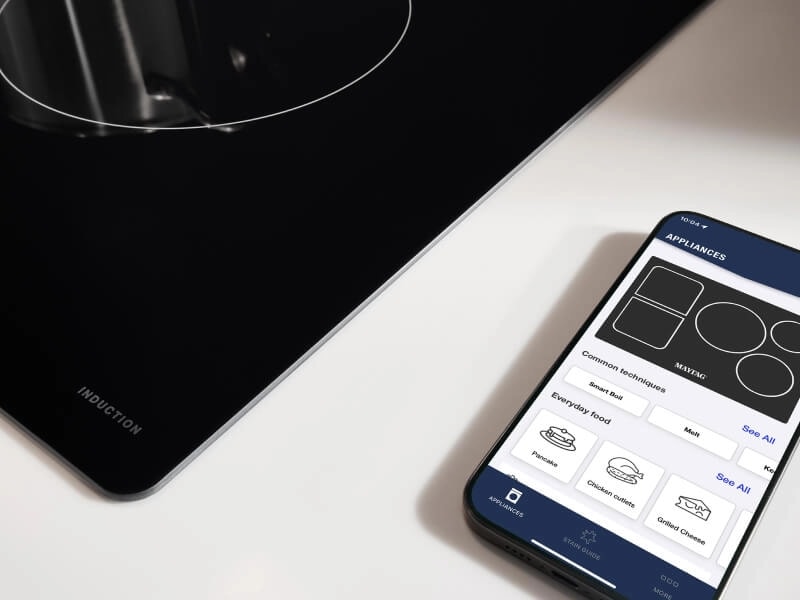
SHOP MAYTAG® INDUCTION COOKTOPS
Maytag® induction cooktops help you get dinner done when and how you want it. Select Maytag® models let you crank up the heat in the kitchen with Power Boost, designed to deliver maximum power so you can reach a boil 2x faster than gas or electric.1 Temp Cook™ Induction Technology on select Maytag® induction cooktops sets a temperature and locks it in. This feature automatically adjusts heat to help keep temps steady, while an XL Cooking Zone on select models features an extra large element design to evenly heat your largest cookware, like oversized pans and griddles.
Electric COOKTOPS
Electric cooktops technically include induction, coil and radiant models. Coil cooktops use exposed metal coils that transfer heat directly to the cookware. Radiant electric cooktops, however, have coils hidden beneath a smooth ceramic glass surface, heating cookware from below for an easy-to-clean design.
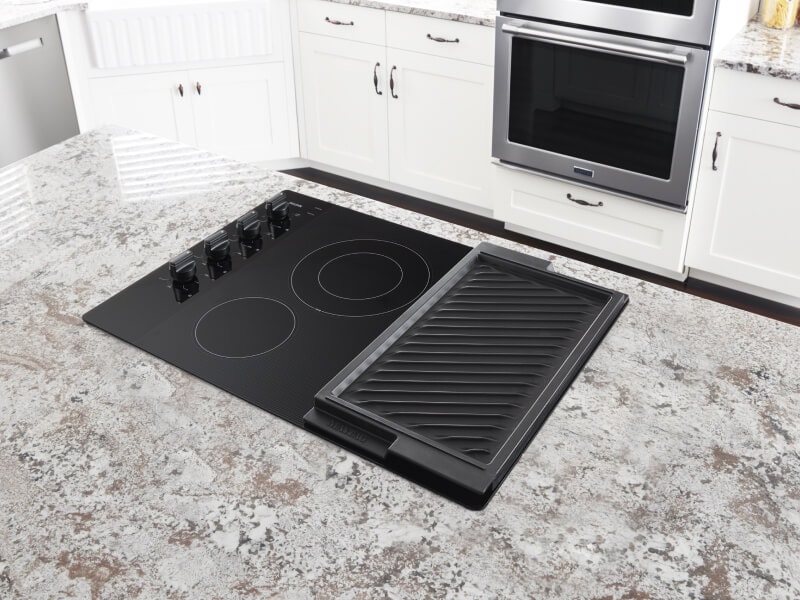
HOW DO ELECTRIC COOKTOPS WORK?
Electric cooktops generate radiant heat—energy that travels through the cooktop surface—to heat cookware. Coil models transfer heat through direct contact with cookware, while radiant electric cooktops hide heating elements beneath a smooth, ceramic glass surface.

ELECTRIC COOKTOP PROS
Electric radiant cooktops are a popular choice in many kitchens, and with good reason. From straightforward installation and easy cleanup to versatile burner configurations, discover what an electric cooktop can offer your kitchen below.
Simple installation: Electric cooktops generally require a grounded outlet, so you don’t have to worry about adding a gas hookup when you install a new model.
Easy cleaning: The smooth surface of radiant electric cooktops helps make cleanup quick and simple, eliminating the need to clean under or around grates or metal coils.
Smooth surface: Find stability as you navigate pots and pans around the ceramic-glass cooktop surface.
- Flexible burner options: Electric cooktops are commonly available in four- or five-burner configurations, giving you plenty of flexibility for everyday cooking. Models may also feature dual or triple electric elements with multiple rings, allowing you to adjust the heating zone to match the size of your pots and pans.
ELECTRIC COOKTOP CONS
Electric cooktops can feature plenty of perks, but being aware of their limitations can help you make an informed decision. Read on to discover potential drawbacks of electric cooktops when compared with their gas and induction counterparts.
Some heat loss during cooking: Compared with induction cooktops, electric models tend to lose a bit more heat as it transfers from the heating element to the cookware.
Temperature shifts more slowly: Because radiant cooktops rely on heated coils, there’s a slight delay when adjusting the temperature as elements cool down. In contrast, gas and induction cooktops typically respond almost instantly, giving you more precise control while you cook.
- Limits cooking techniques: Open-flame techniques that are ideal for gas cooktops—like flambéing—are tougher on an electric cooktop. You’ll also miss the wraparound heat a gas flame gives to cookware like woks.
SHOP MAYTAG® ELECTRIC COOKTOPS
Maytag® electric cooktops offer the features you need to cook up whatever is on the menu. The Maytag® Exclusive Electric Cooktop with a Reversible Grill and Griddle lets you boil, pan fry, grill, sear, flip and griddle. Flexible features on some Maytag® models—like the 12/9-inch Dual-Choice™ element—give you the ability to cook with the pan you want and the power you need. Control a slow, even sauté and then intensify the heat for searing.
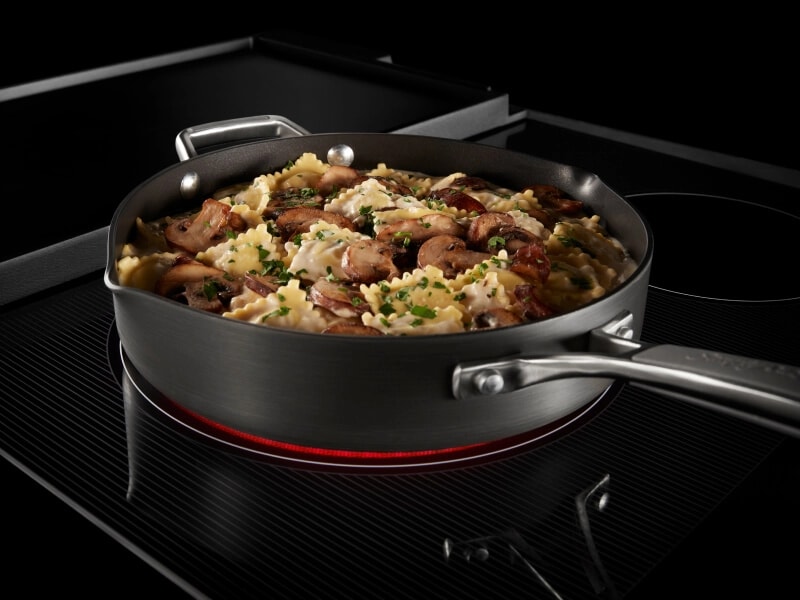
What are the DIFFERENCES BETWEEN INDUCTION AND ELECTRIC COOKTOPS?
Induction and electric radiant cooktops may seem similar at first glance, but understanding their functional differences can help you narrow down your search. See the breakdown below to discover how they compare, from heating speed and responsiveness to cost and required cookware.
Temperature control: Induction cooktops respond almost instantly, letting you move from boiling to simmering and back relatively quickly. In contrast, electric radiant coils can take longer to adjust, holding onto some heat after you turn them down.
Heating speed: Induction cooktops heat the cookware directly, rather than the surface beneath it, which means they can reach high temperatures faster and can bring water to a boil more quickly than traditional radiant models.
- Cost: Induction cooktops often come with a higher entry-level price point than electric radiant models, especially since they may require an additional investment in compatible cookware. However, keep in mind that prices can vary widely depending on the features included.
- Cookware requirements: Electric radiant cooktops work with nearly any type of cookware—including copper, ceramic and aluminum—offering plenty of flexibility. Induction cooktops, on the other hand, require compatible materials like cast iron, enameled steel or induction-ready stainless steel.
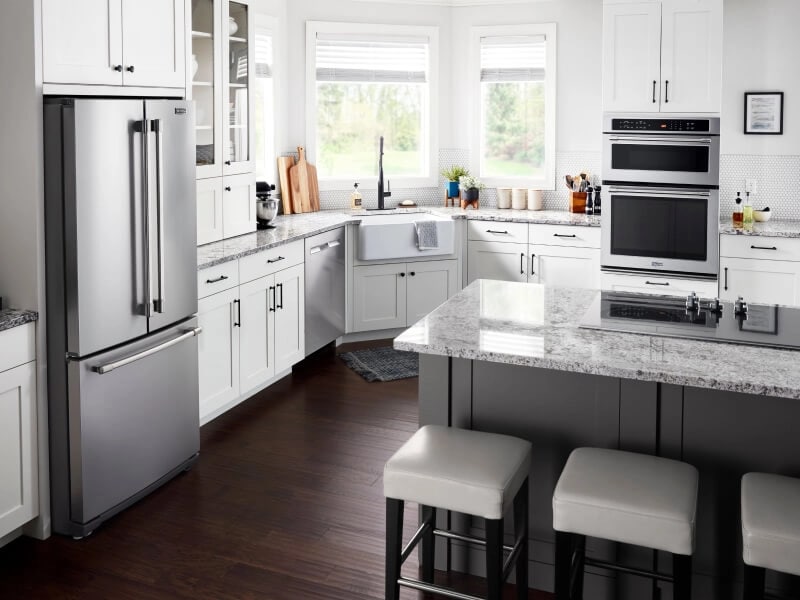
EXPLORE MAYTAG® INDUCTION AND ELECTRIC COOKTOPS
Bring power and convenience to the kitchen with a Maytag® induction or electric cooktop. The 10/6-inch Dual-Choice™ element on select Maytag® electric cooktops gives you the ability to cook with the pan you want and the power you need. Control a slow, even sauté and then intensify the heat for searing. Get dinner done right the first time with No Guess Presets on select Maytag® induction cooktops. Set your cooktop to the exact results you want with one-touch cooking modes like boil, saute, simmer and more.
Was this article helpful? Pass it on
LEARN MORE WITH MAYTAG BRAND
1. Compared to MEC8836HS.


